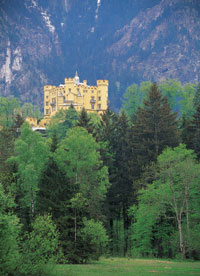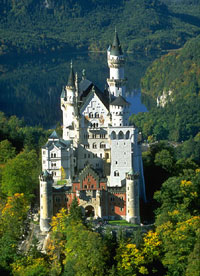 German Cuisine German Cuisine As a whole, German food is mostly known for it's large portions, heartiness, and the melding of sweet - savory dishes. As with other cultures of culinary noteriety, it is also quite diverse in its varieties. In northern Germany, influences from neighboring Poland, Holland and the Scandinavian countries are predominant. Thick stews, smoked meats and fish like salmon and herring. The central region, known best for its beers and ales served alongside ham and rye bread, also has a diversity with various pastries, ragouts and vegetables. As you move south, the cuisine seems to lean towards the lighter side, especially in the wine regions and areas where wild game is plentiful. The art of charcuterie ( preparing of meats, particularily but not limited to, pork that one would find in deli's or specialty shops) has a very rich history in Germany. The incredibly large amounts of different sausages, served hot or cold, are among the finest in the world. Here is a small sampling of the endless varieties available: - Bierwurst, a large cooked sausage with a red outer casing and a predominant garlic flavor, usually served cold with breads, cheese and beer, naturally.
- Bratwurst, a mixture of pork, veal and seasonings for grilling or sauteing. Served hot, usually accompanied by braised cabbage or saurkraut. Note that bratwurst has many variants from place to place.
- Braunschweiger (liverwurst), a liver sausage enriched with egg and milk. Soft enough to spread, it is generally served at room temperature.
- Bragenwurst, lightly smoked, it is made from a mixture of pig's brains, pork fat, oatmeal, and onions.
- Plockwurst, a mix of beef and pork. The outer casing is a shiny, dark red.
- Frankfurter, probably the most known, it is always served on a roll with mustard.
- Knackwurst, a crispy, pre-cooked sausage of beef and/or pork. traditionally served with saurkraut.
- Schinkenwurst, served cold, a large sausage made of beef and coarsely chopped, lean pork.
- Weisswurst, a white sausage, highly flavorful, made of beef, veal and parsley.
 Often served cold, sausages and meats that make up charcuterie, are found everywhere in Germany and serve as a staple at the German dinner table. These will usually accompany horseradish, mustards and onion served on platters. Often served cold, sausages and meats that make up charcuterie, are found everywhere in Germany and serve as a staple at the German dinner table. These will usually accompany horseradish, mustards and onion served on platters. Various cheeses are also popular: Quark, a soft white cheese with paprika and herbs; hard cheeses are smoked, blue cheese eaten with beer. Vegetables are often more of an accompaniment. Cabbage is most popular, but, also: potatoes, mushrooms, asparagus, various legumes (beans), peas, and other root vegetables (turnips, beets, carrots, etc.) are among the more commonly used. These are all aspects of German cuisine as a whole, many parts of Germany are known for their specific offerings. Desserts and pastries are as common as beers, varieties of tarts and cakes abound. Gingerbread, marzipan, and sweet, filled bisquits to name a few other popular pastries. Common flavors in German pastries include: lemon, poppyseed, cinnamon, and almonds. View some of our German recipes
 | Sauerbraten
Difficulty Level: medium Slow braised beef with a tangy pan sauce |
 | Spaetzle
Difficulty Level: Easy German Dumplings (spaetzle means little sparrow) |
| |
|
|



